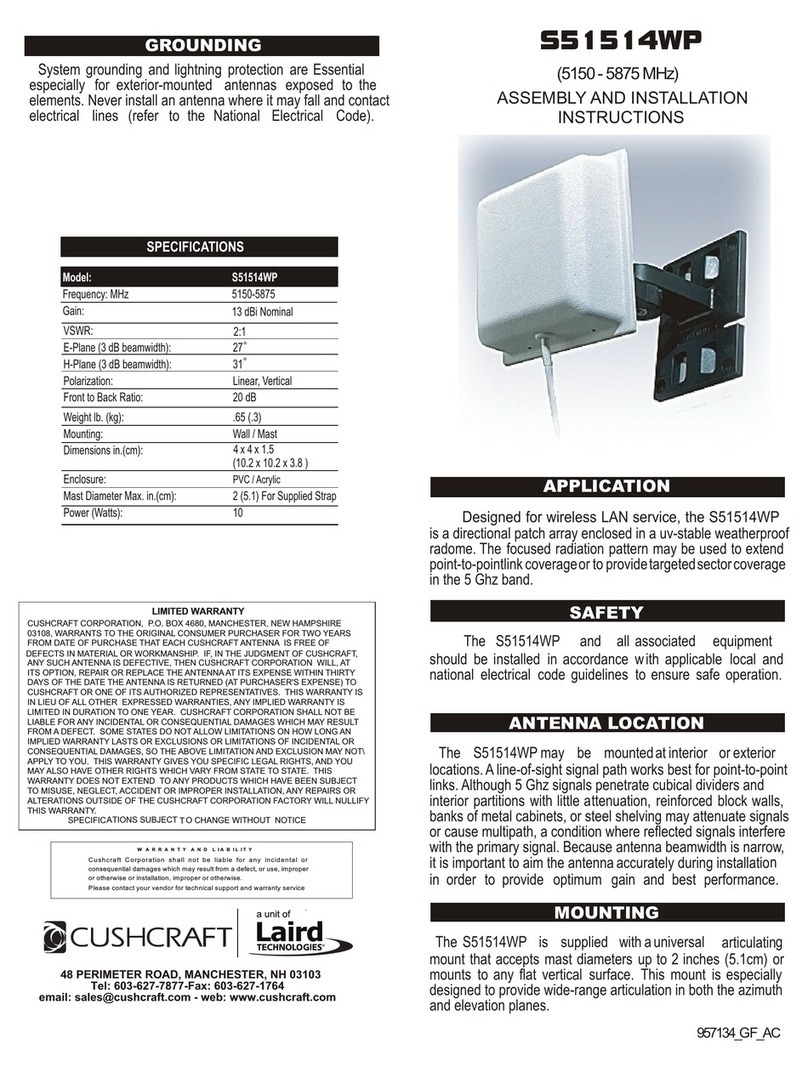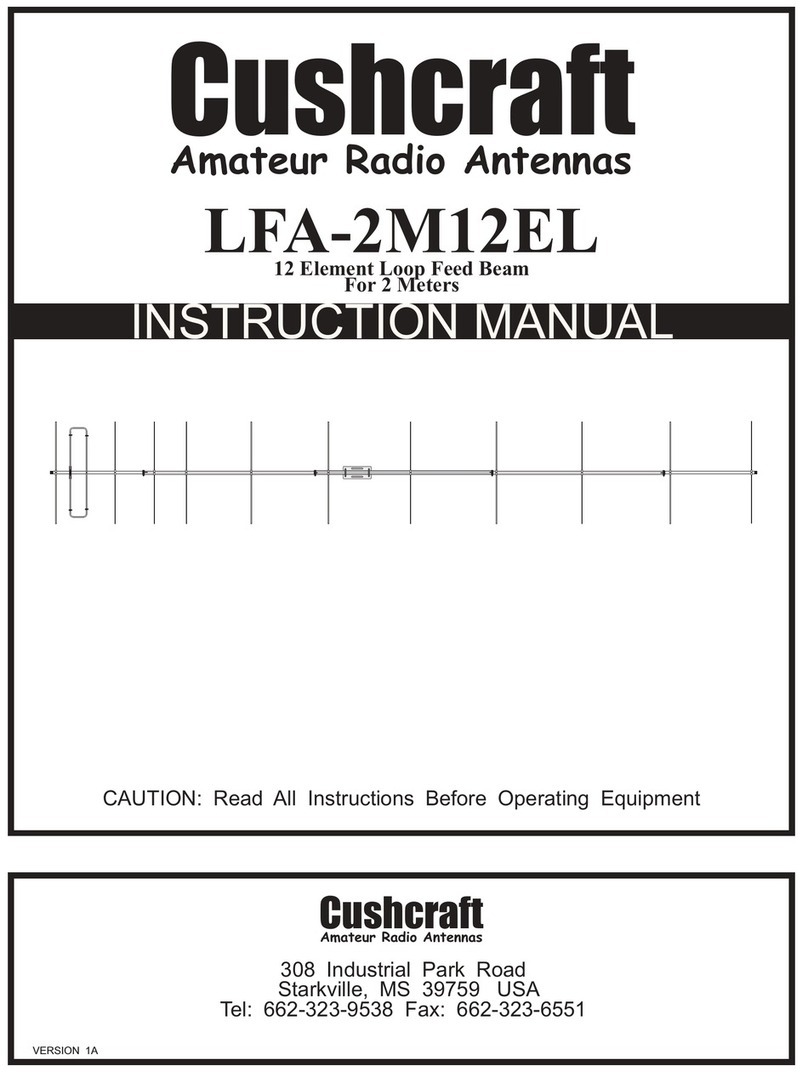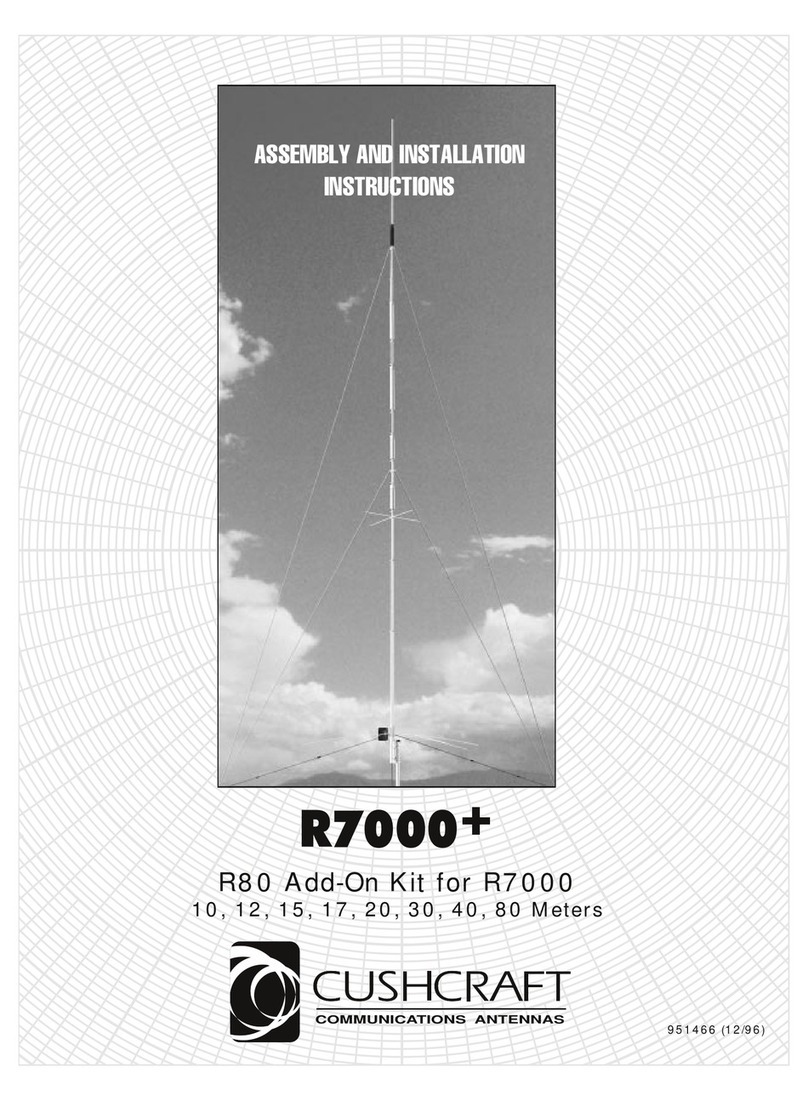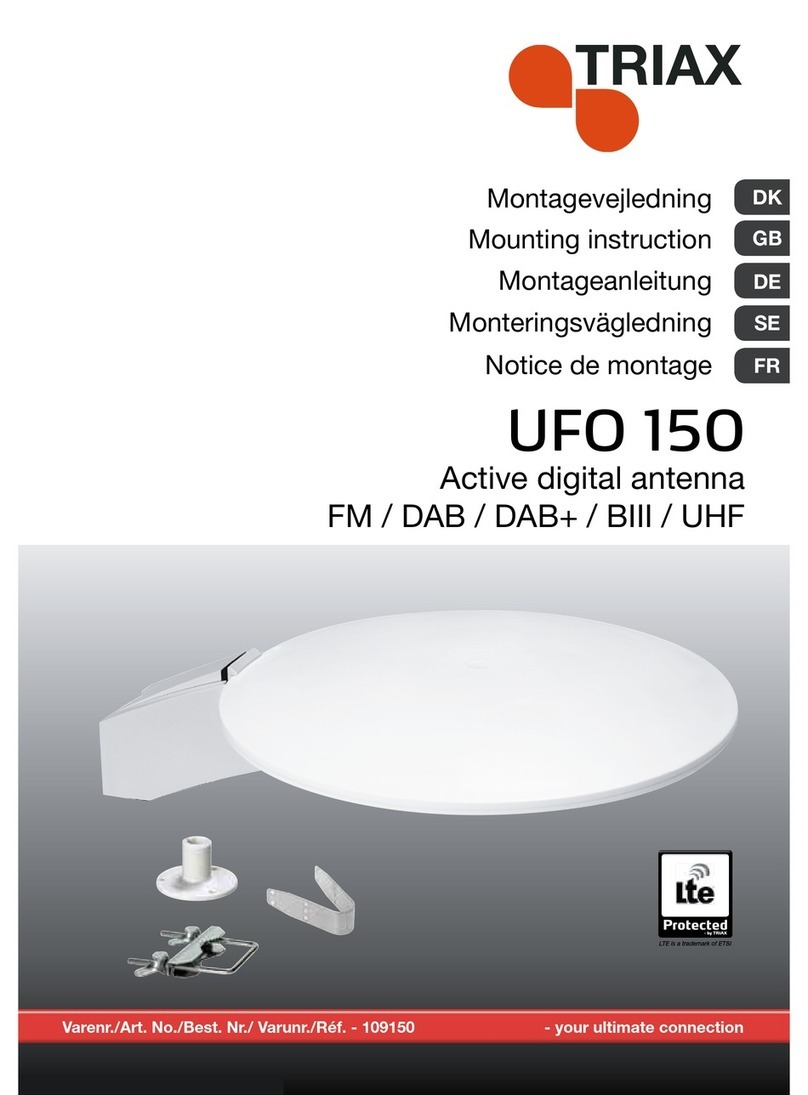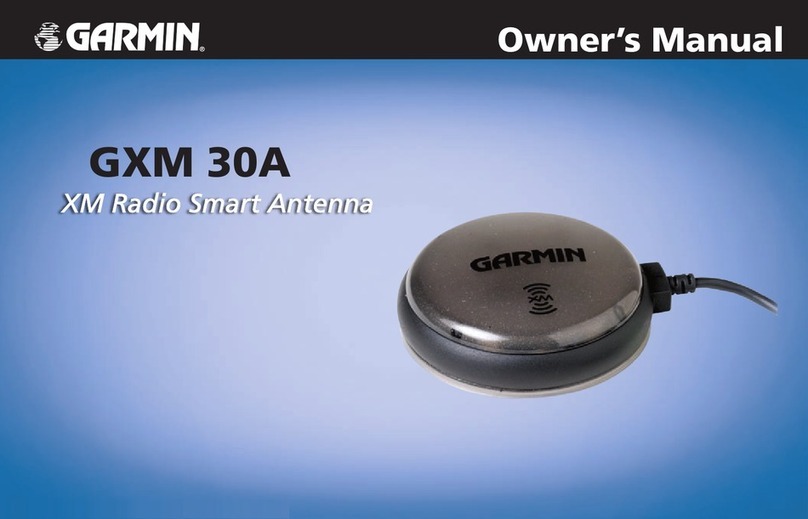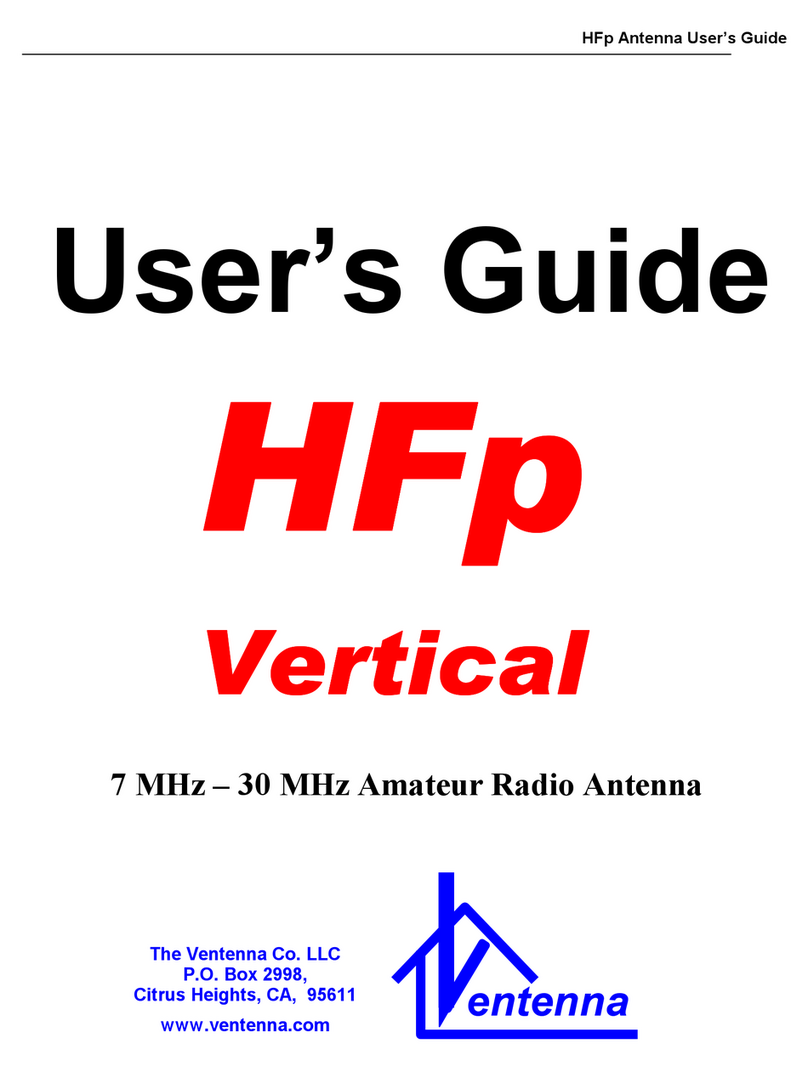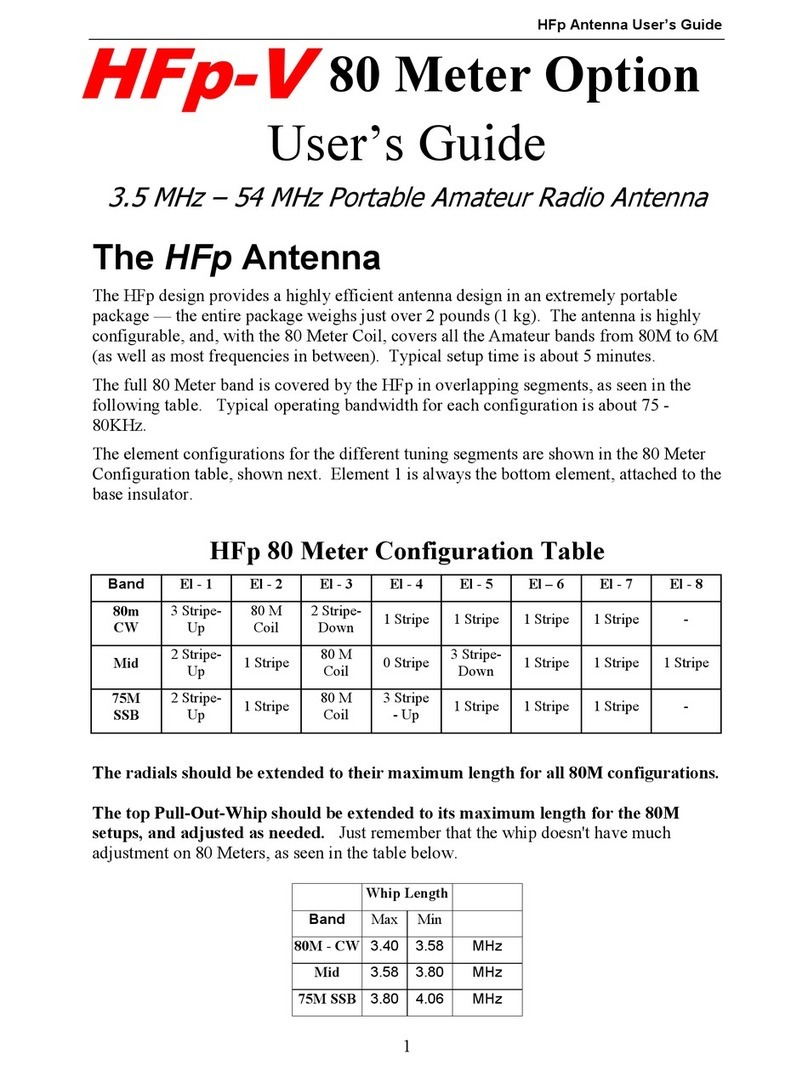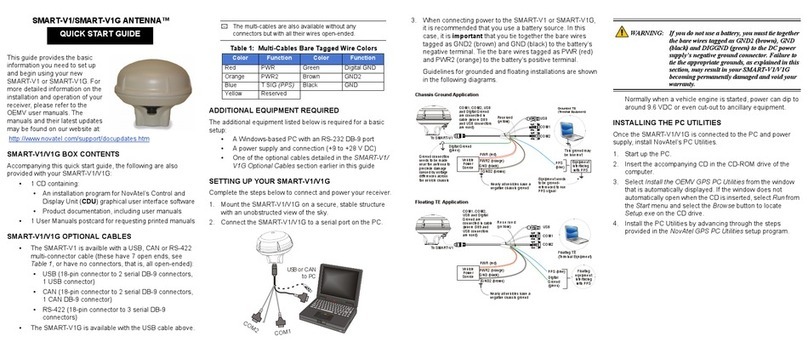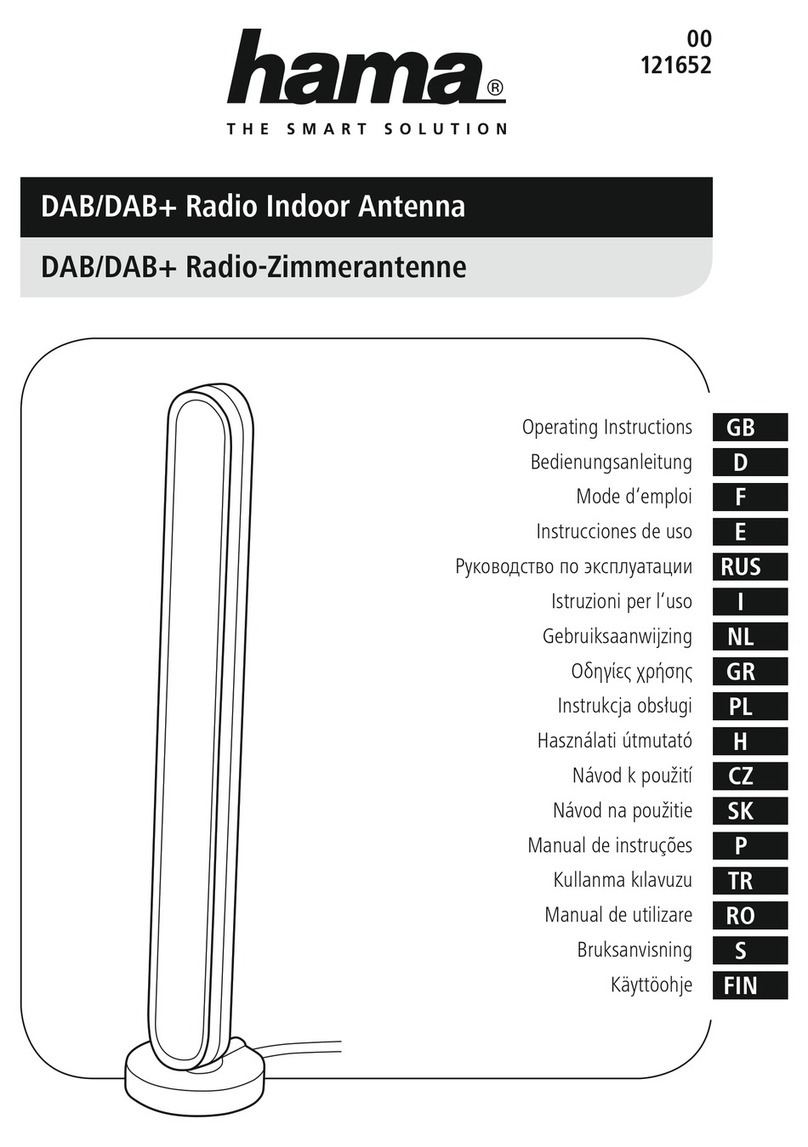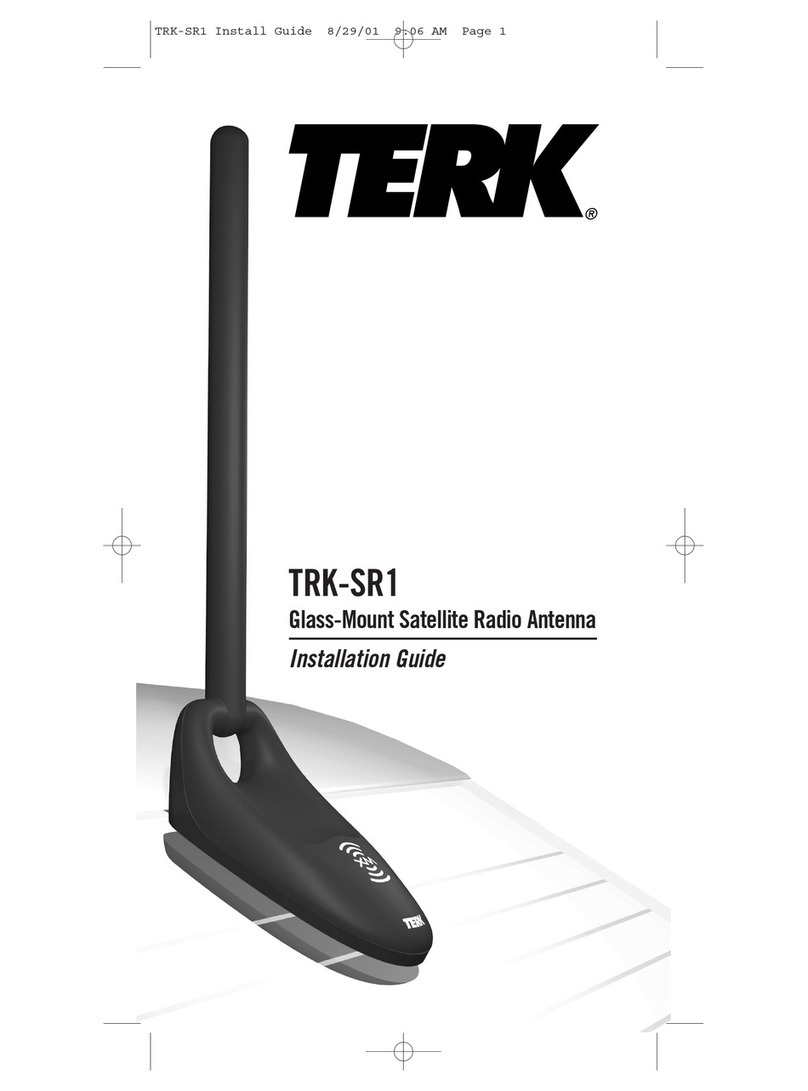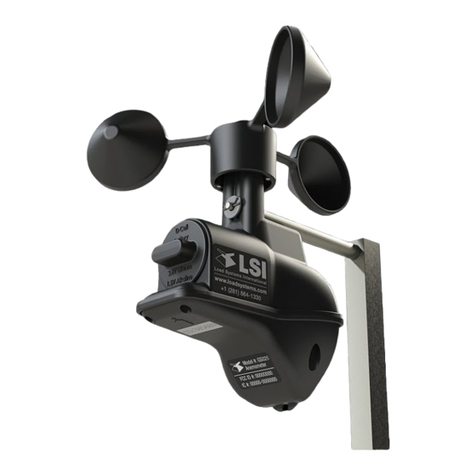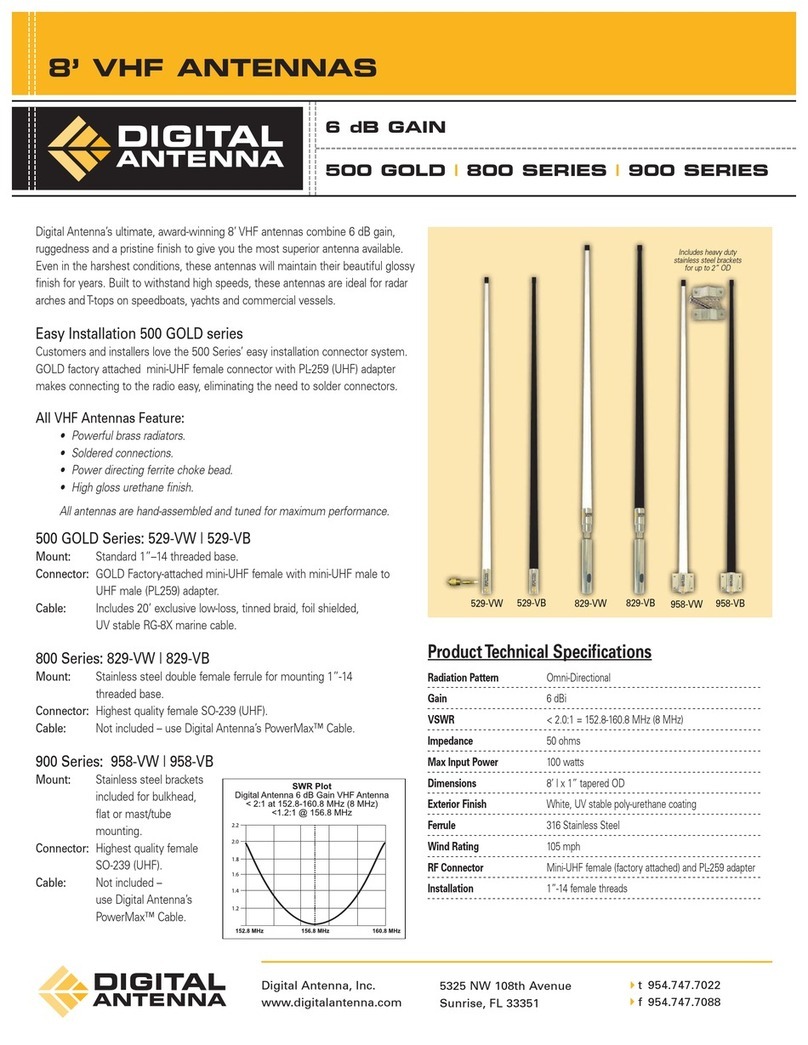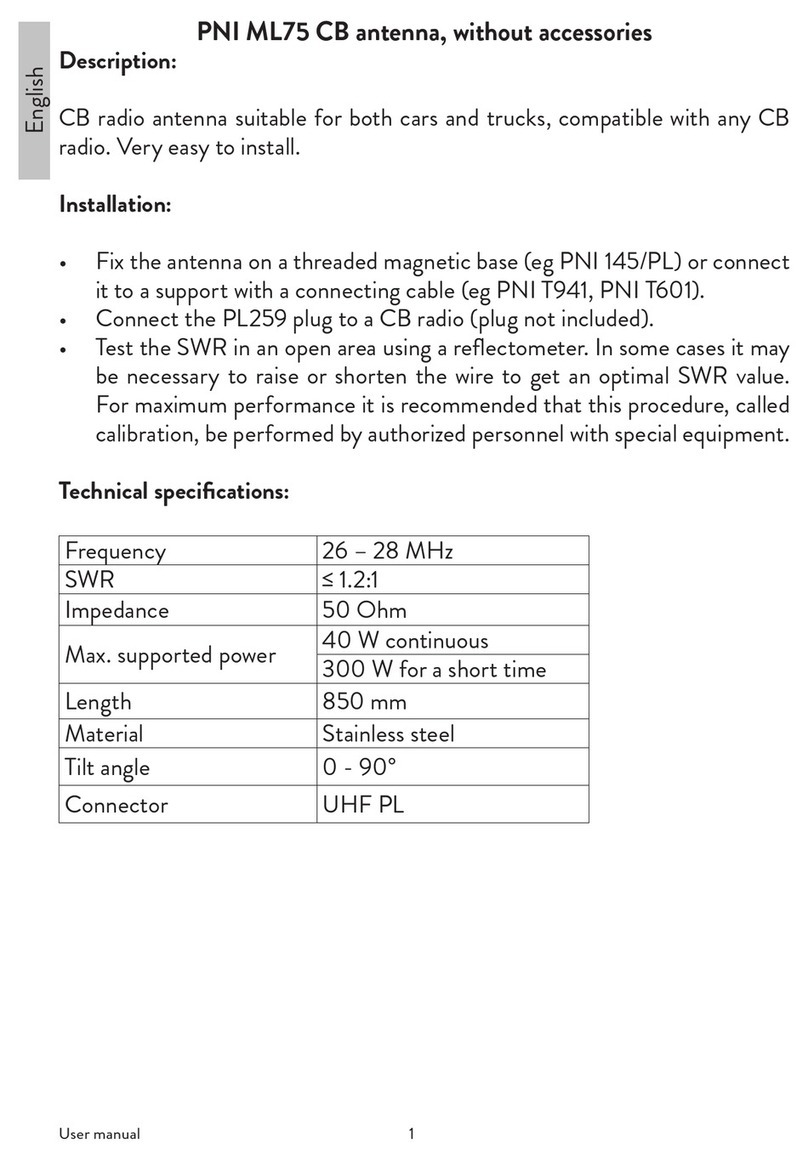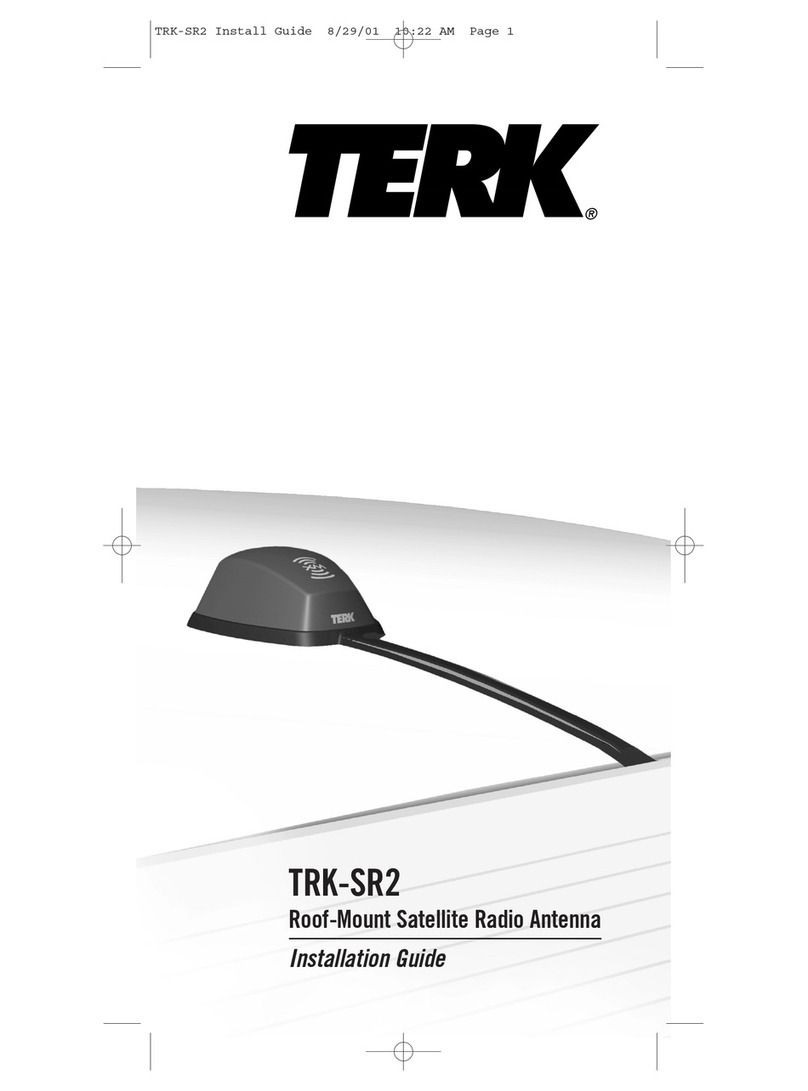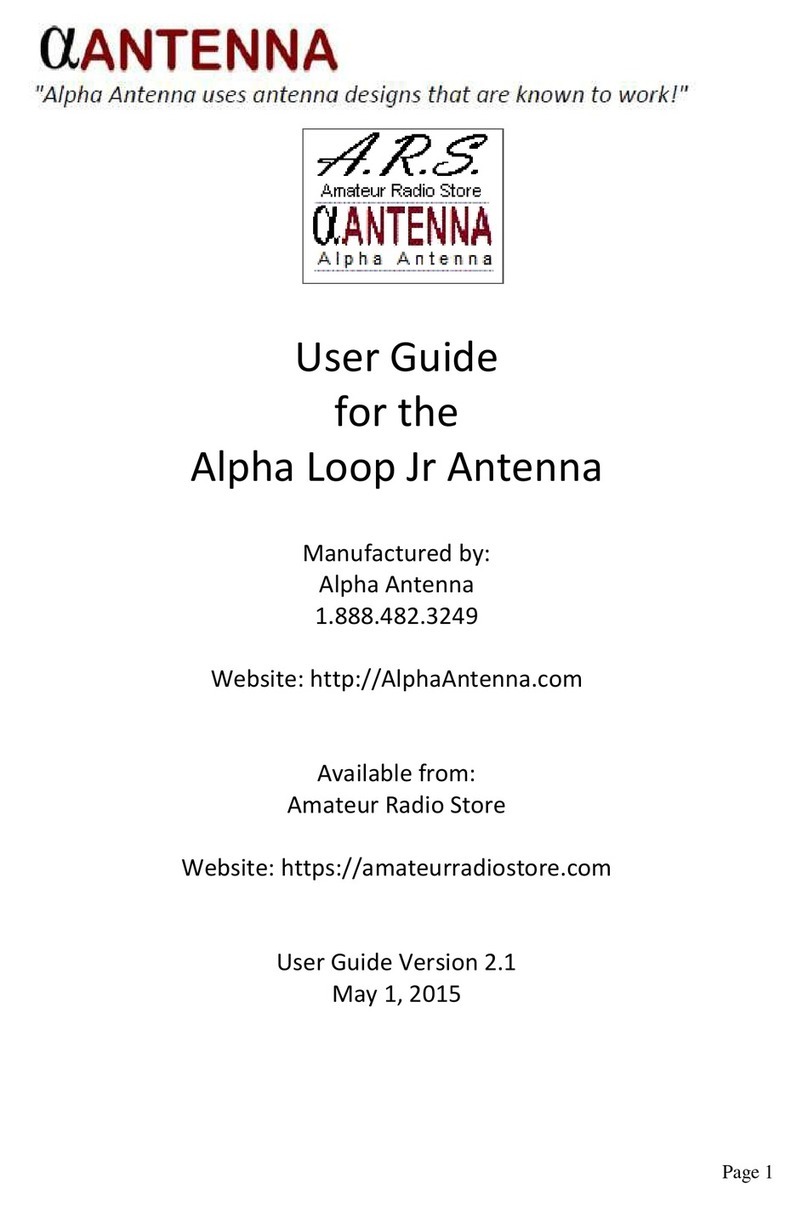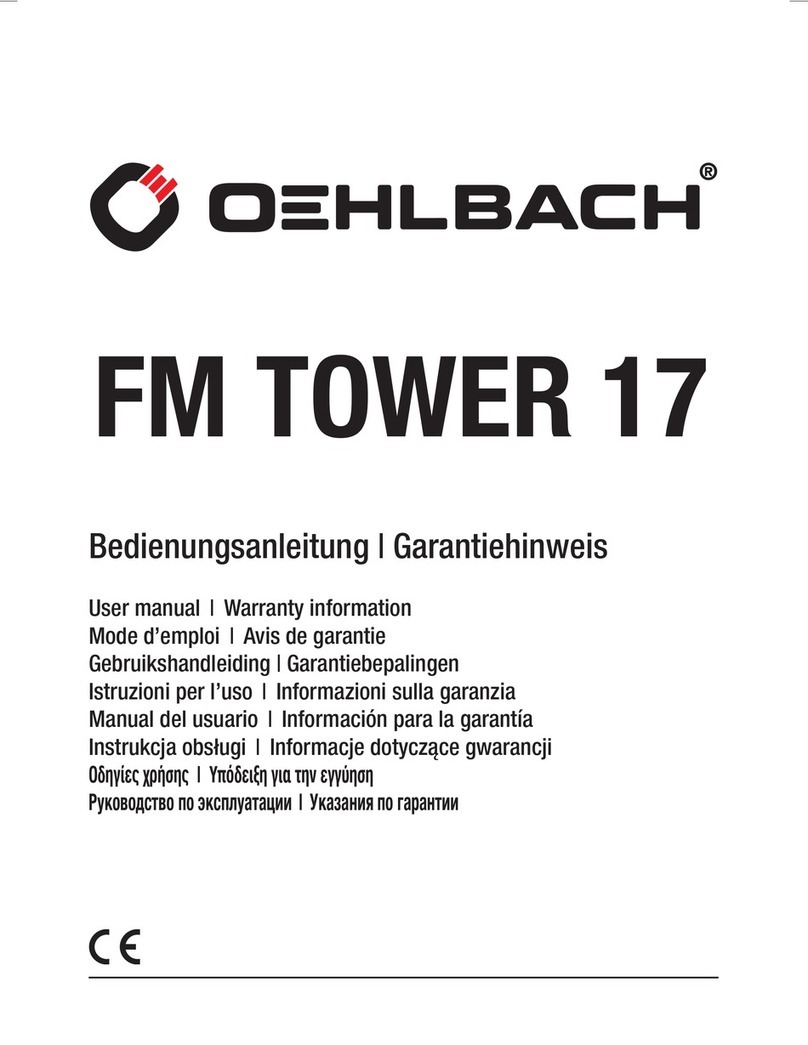
HFp Antenna User’s Guide
Page 3
The HFp Antenna
The HFp design provides a highly efficient vertically polarized antenna design in an extremely
portable package - the entire kit weighs about 2.5 pounds (1 kg). The antenna is highly
configurable, and covers all the Amateur bands from 7 MHz to 54 MHz (as well as most of the
frequencies in between). An add-on option is available which covers 60, 75 and 80 Meters.
In this User’s Guide, you will find setup configurations for each Ham band from 40 Meters
through Six Meters, for the antenna sitting on the ground. If the antenna is on a balcony, or
mounted with the optional BackPack Mount Kit, you can use the configuration table as a starting
point, but you will need to experiment to get the setup right with the different mounting. There
is also a laminated card in the antenna bag, with the Ham Band configuration tables on it. The
card makes it easy to take the basic setup information with you on your portable operation trips.
The antenna is configured for different bands by the selection and orientation of the six elements
that are included in the kit. Three of the elements are marked with a single stripe and contain no
loading coil. One element is marked with two stripes and contains a small inductive load near
one end. One element is marked with three stripes and contains a larger inductive load near one
end. And one element is about 2/3 the length of the others, and has no stripe or load. The
elements are coupled together by means of threaded brass Inter- lement Connectors (I Cs).
In addition to using combinations of elements, the orientation of the loaded elements (the two-
and three-stripe elements), with the striped end either UP or DOWN, determines the operating
frequency. In the configuration table later in the User’s Guide, as well as on the laminated
configuration card, you will see elements marked, for example, “2-stripe up”. If you assem le
these elements in the wrong orientation, the antenna will not tune to the desired frequency.
The one-stripe and zero-stripe elements have no orientation, and may be assembled into the
antenna either “up” or “down”.
The HFp is designed to operate optimally with three tuned radial wires. We have found, after
much testing, that less than three wires reduces the antenna's effectivity, and more than three
doesn't seem to add much. The antenna will certainly radiate with one or two radials, but unless
you are hanging from a cliff, it is worth the time to set up all three. The radial wires are coiled
on plastic spools, and are marked in several places along their length. In use, the ring terminal is
attached to the antenna base, and the wire is un-spooled to the correct mark for the band in use,
as indicated in the Configuration Chart. This length is the “tuned length” for the radial wire, not
the quarter-wave length, and can later be adjusted for the lowest SWR.
Guy lines are included with the HFp for use when it is windy, or when the antenna will be left up
for some time. It is recommended that the guys always be used for the 40 meter configuration.
The guy lines have lug rings which are placed between two of the upright elements (typically
between the fourth and fifth elements from the bottom), using a special I C. The lines are then
run out to their full length and secured with the aluminum stakes provided, or tied to a handy
rock. Some small flag material attached to the guys will help prevent people from walking into
them. If the guys are run in the same direction as the radial wires, they will help protect the
radials from being tripped upon, as well. The Guy Line Sliders make adjusting the guy lines
very easy. (See Page 10)
You will need a length of coax to go from the HFp to your radio location. It should be long
enough so that you are at least a half-wavelength away at the lowest operating frequency. RG-58
has acceptable loss at these frequencies, and can be used for up to 100 Watts of power.
